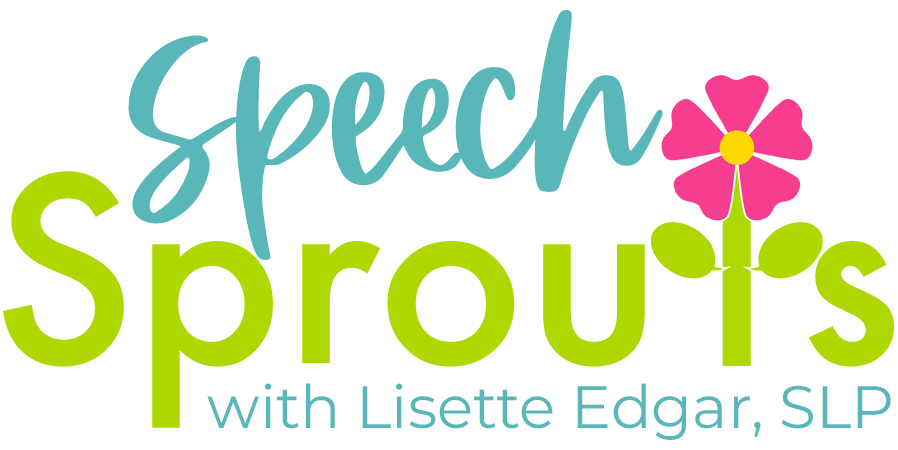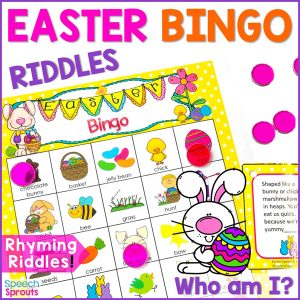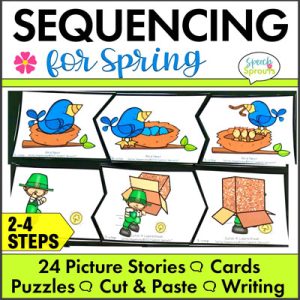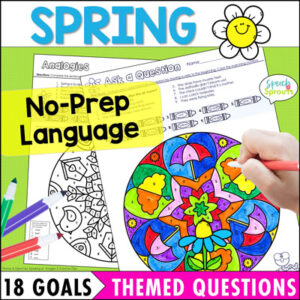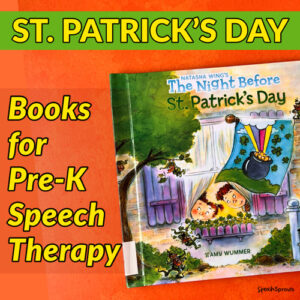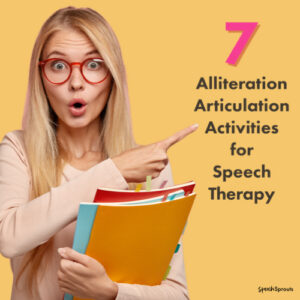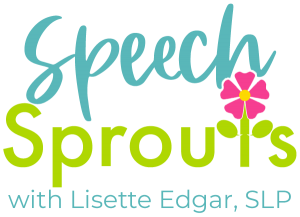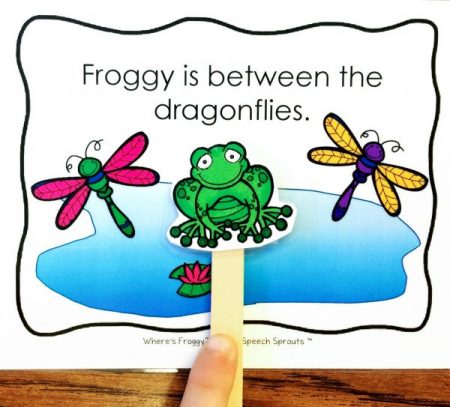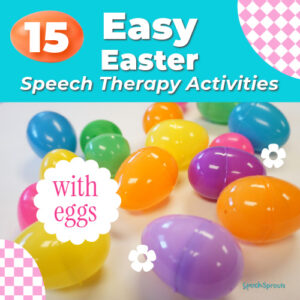
15 Easy Easter Speech Therapy Activities and Games with Plastic Eggs to Try
Ready to try some fun games with plastic eggs in your next speech therapy session? If you have a stash of those colorful plastic Easter eggs, the week before Easter is prime time to use them.
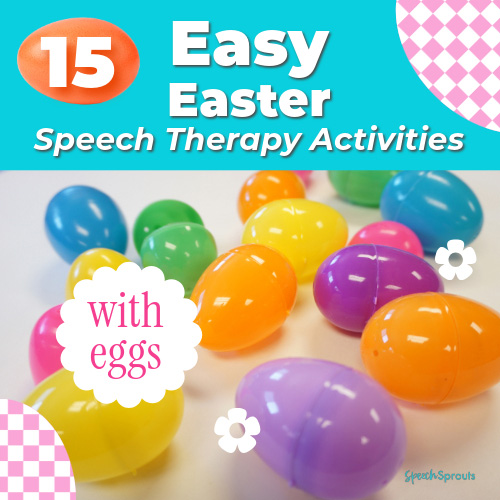
These games to play with plastic eggs are not just for Easter
Grabyour plastic Easter eggs throughout the year whenever you want to add extra fun and motivation to practice speech skills. Your students will be excited to play with them any time of year, pinky swear. And not just your preschoolers. Bigger kids love them too.
Your eggs will go perfectly with several of your themes. Try them in your spring, farm, dinosaur, or bird themes. Just think how many repetitions for articulation of velar final /g/ you can get with egg activities.
But wouldn’t an egg hunt be distracting and get chaotic in my Easter speech therapy sessions?
Things can get frenzied if everyone egg hunts at once, so I wouldn’t recommend doing that. You need better control over the activity (and less pandemonium), right?
How can you modify an egg hunt for a successful session?
Have your students take turns getting up (one at a time) and find just one egg to bring back to the group. After finding an egg, and returning to the table or carpet, students practice the speech or language skill they’re working on.
Here’s another way to have fun while maintaining control of games with plastic Easter eggs.
If hunting seems just too much for your kids to maintain focus on what’s really important (practicing their speech and language skills) or if you have a small space, go to plan B. Just put your eggs in a bag or basket and have students pick one without looking.
If your students need a little movement, they can get up one at a time and come to you to reach in and choose the egg. This method takes less time than a hunt and helps you maximize practice in your sessions.
Check out this list of Easter speech therapy ideas for fun games with plastic eggs
Of course, it’s fun to fill the eggs with something, because kids love opening them to see what’s inside. If you do this, have the group re-fill the eggs (if they’re old enough to manage that) before they leave you. They can also re-hide the eggs if you are having a hunt. This way, you’re ready for the next group.
But what do you put inside your eggs? I’ve got you covered there.
There are lots of ways to fill plastic Easter eggs to create fun speech therapy activities.
- Put a mini animal, object, or mini eraser in each egg. When your students open their egg to see what’s inside, have your students work on:
- Category sorting. Sort the animal or object into colorful small easter baskets or egg cartons. Is it a zoo animal or a farm animal?
- Describing: Children describe the animal or object they find inside, then put their egg in an egg carton. (Cut them in half for a mini egg carton.)
- Naming to a description: the other children in the group guess what the item is from the description the first child gave or… you can describe an object while keeping it hidden. until a student guesses it.
- Articulation.
- The student names the object and uses it in a carrier phrase with their speech sound. For instance, I got a ___, I found a ___, I like this ____, I see a ___. (You get the idea.)
- Use the object in a sentence with one of their articulation words. describe the object inside with attributes and the category.
- Following directions with spatial concepts. Put the eraser (behind/ inside, in front of) , etc the green egg.
- Put multiple mini erasers or pompoms of varying quantities in each egg.
- Articulation: students open and count the erasers, then practice their articulation word that number of times
- Quantity concepts: Which egg has more pompoms? Which has less? I put three pompoms in this egg. Now you put more pompoms in your egg.
- Category sorting with colors or size: Sort the pompoms by color or include multiple sizes and sort by big and little or small, medium, and large.
- If you put two figures inside each egg. Students can tell if they are the same or different or compare and contrast them.
- Write the numbers 1-10 on your eggs. Give each student a list of 10 articulation words or prompts for their speech goal. When students find or choose an egg:
- Refer to their list of prompts and practice the matching numbered prompt or word. What word (or question) is #10? Let’s practice.
- You can even require the number of repetitions to match the number on the egg to make it easy to get high repetitions for articulation practice.
- Alternatively, you can have children find all the eggs first, dig in their bucket for the next number, and then practice their speech skills.
- Write words on each half of an egg with a permanent marker. Your students must find the 2 halves that go together. If you want to make it more challenging, mix up the top and bottom colors.
- synonyms and antonyms
- associations
- irregular present and past tense verbs
- irregular singular and plural nouns
- multiple meanings– write the same word on each half, have students give 2 meanings for the word.
- Put different colored mini pompoms in each egg. Each child is assigned a pompon color. After finding an egg, students bring their egg back to the table. Children open their egg and collect the pompoms with their color in a cup or small basket. Your color is blue, how many blue pompoms did you get? Three?
- Articulation: Let’s practice your word three times
- Attributes: tell me three things about an egg
- Naming Category Members: Tell me three things that are round.
- Quantity concepts: You have 3 blue pompoms. I have 2 red pompoms. Who has more?
- WH questions. You have 3 pompoms, so You can answer 3 questions for me.
- Put mini cards or slips of paper in the eggs with words or questions. You can work on all kinds of skills with this. for instance:
- Social skills: Give someone a compliment. What could you do to help someone in your class? At home? What’s something nice that someone has done for you? What can you do that’s kind (or nice.)
- Put a word in each egg. Students must use the words in the eggs to create a sentence. This activity can target numerous skills such as sentence construction, sentence-level articulation, past tense verbs, describing, naming synonyms or antonyms, naming category members, and more.
- You can also put two words in the egg, for your students to compare and contrast.
- Put a slip of paper with a positional concept in each egg. Give students a small chick or bunny to place in that position, related to where the egg is.
- Pair up your students. One student is the “finder”. Another student gives the finder directions on how to find a specific egg using spatial concepts and color (or size if you have eggs in various sizes). It can be hidden in plain sight for younger students. “Find the yellow one in front of the door.”
- Listening activity: Fill your eggs with different objects, such as rice, coins, marbles, paper clips, jelly beans, etc. Have your children shake the eggs and talk about what each one sounds like. Do these two eggs sound the same or different? What do you think is inside?
- Hide puzzle pieces in each egg. When students return with the egg, they practice their speech or language skills, then get to place the puzzle piece while another child in the group goes to find the next egg.
- Play a memory game with objects or cards. You’ll need several egg cartons, or just use half eggs to cover up the objects.
- Follow multi-step directions with the eggs. For instance: Put two yellow eggs under the chair and a red egg on top of the chair. You can also work on following directions with pompoms or objects they find inside the egg.
- Requesting and pronouns: Hold out two eggs. Model, “Hmm, which one do I want? I want the blue one.” After opening your egg to reveal something fun inside, prompt “Which one do you want?”
- Work on who questions and receptive and expressive pronouns with directions. Give me a blue egg, you take a green egg. Who has a blue egg? Who has the green egg?
- Finally, try these fun motivational games with plastic eggs:
- Grab some paper cups, turn them upside down and put an egg on top. Use ball poppers to shoot the egg off the cup.
- Fill the eggs with mini erasers or objects, use 4-6 different ones. The object will be to collect one of each type in their egg carton or on a card with a grid. After practicing their skill, the student reaches into an Easter basket, pulls out an egg, and opens it. If they need that eraser/ object, they keep it. If not, they put it back in the egg. The egg then goes back in the basket. Whoever gets all the different objects first wins!
Looking for another game for Easter that covers multiple skills in your groups?
My Easter Bingo Riddles game is extraordinarily fun because your students need to listen and solve the rhyming riddles to play. Play digitally or print it, this game will become your Easter go-to for any size group and push-in therapy too. You can find this best-selling Easter game on Teachers Pay Teachers or right here on my Speech Sprouts website.
I hope you got some great new ideas for learning games with plastic easter eggs.
If you try any of these games with plastic eggs, post a picture on social media and tag me @speechsprouts, I’d love to hear how it went or what other amazing ideas for games with plastic eggs that you have. Have fun!
Share it:
- Read more about: Themes
